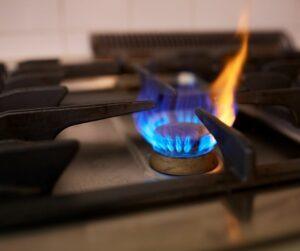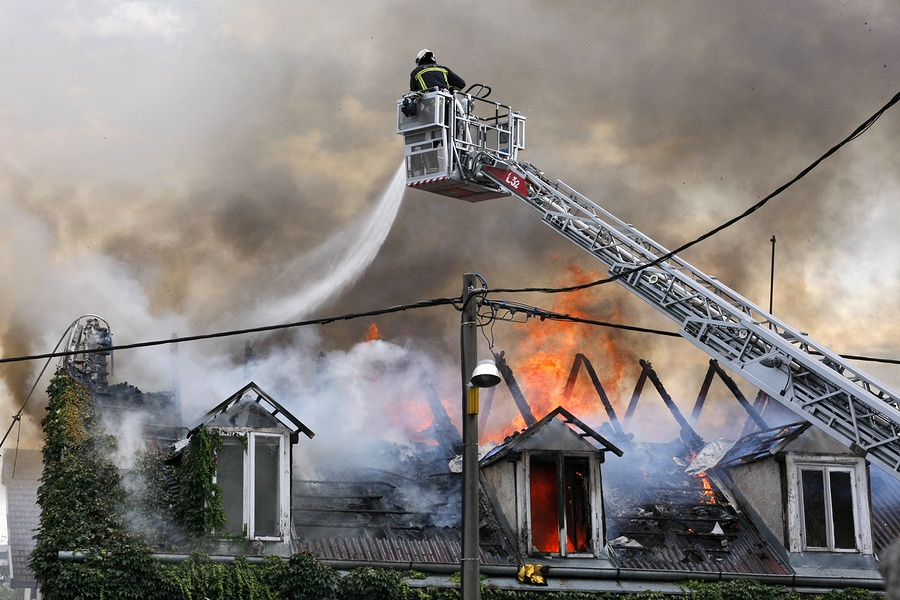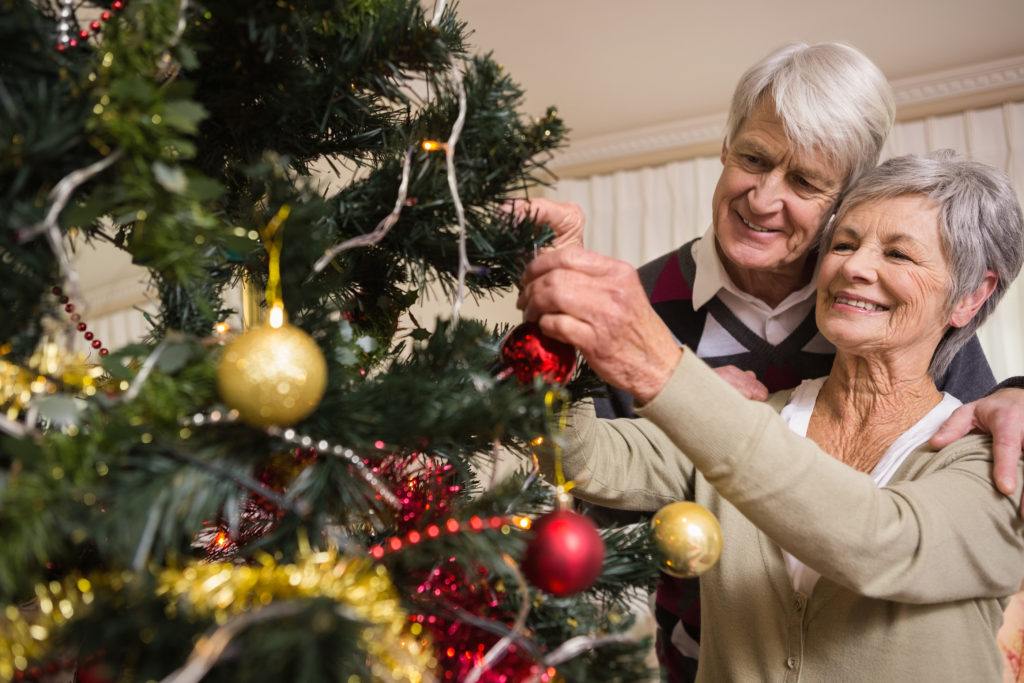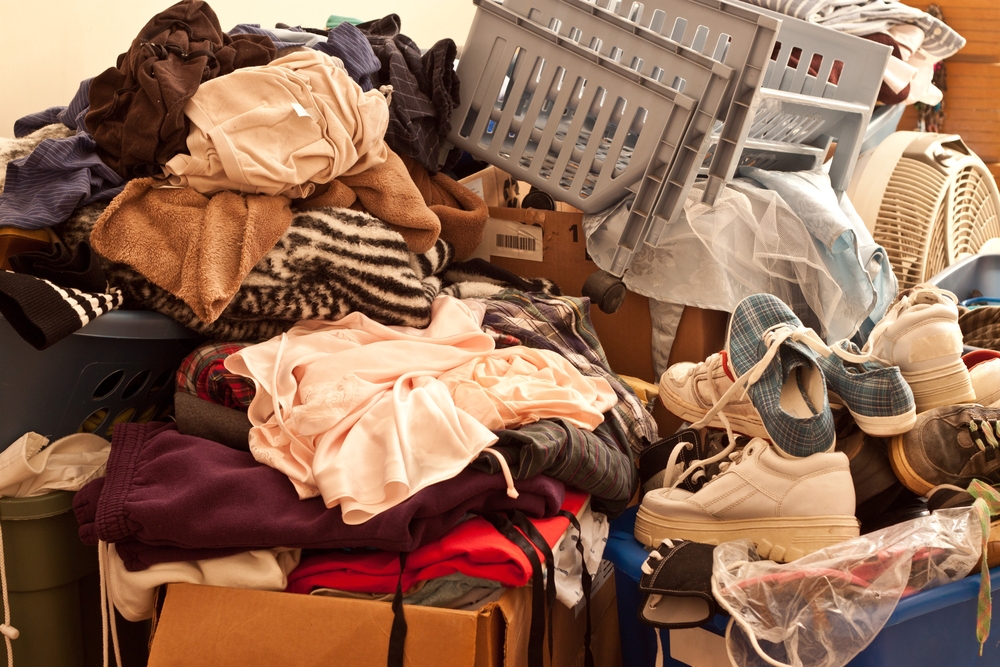Statistically, home fires increase during the cold weather months. In fact, insurance companies and fire departments actually prepare for more fires during December, January, and February. To help keep you and your family safe when heating your home, it’s important to understand the basics of fire safety and know who to call after a fire emergency. Here are some common causes of house fires to keep an eye on:
 Candles
Candles
Fires caused by candle use are common during the fall and winter seasons. If you burn candles, make sure they aren’t close to objects that will catch on fire. Don’t leave burning candles unattended, and keep them away from children.
Electrical
A common contributor to house fires is an electrical failure or malfunction. According to the National Fire Protection Association, the leading areas of electrical fires are the bedroom, kitchen, attic, and garage. One of the most common places for an electrical fire is the clothes dryer. Make sure you clean the air duct regularly and clean the lint screen after each use. Watch electrical cords for cracking or fraying and make sure you don’t run them under carpets. If the cords aren’t visible, you won’t be able to see problems when they occur. Don’t leave the stove unattended when cooking, and make sure it is fully off when you are done. Plug your appliances directly into outlets and avoid using extension cords.
Garage Fires
Fires beginning in the garage are also a top source of house fires in winter due to highly flammable materials being stored. Ideally, store these items in a shed away from the home. To avoid a garage fire, install a heat alarm that will sound if the temperature rises too high.
Heating
Space and baseboard heaters are common causes of home fires. Failure to properly clean the heaters is a leading contributor. Placing flammable objects too close to the heating equipment is a leading cause of fire. If your home is heated with baseboard heaters, make sure furniture is a reasonable distance from them. Check often to see that nothing has fallen into or close to the heaters.
Cooking
Cooking is a relaxing and fun activity that brings friends and family together. It’s also a major cause of home fires and injuries. Be alert while you are cooking, especially if you’re using high heat. Keep flammable items away from the cooking area and turn off all cooking equipment when you are done.
Learn More: Common Causes of Winter House Fires
Take Steps to Avoid House Fires
Protect your home and family by going through the precaution list. Take the steps needed to decrease the risks of house fires in winter.
Basic Fire Safety Tips
- Don’t try to put out a fire that’s larger than the size of a chair. Get yourself and everyone in your household outside, then call 911.
- Make sure there are no flammable materials near stoves. (Smother small grease fires with baking soda or table salt.)
- Have your fireplace/chimney cleaned, and schedule a furnace inspection and cleaning every year.
- Don’t leave candles unattended – children or pets may knock them over.
- Hire a licensed electrician to do electrical work in your home.
- Don’t smoke in your home. Abandoned cigarettes can smolder, and you can fall asleep while smoking.
- Keep clothing and curtains a few feet away from space heaters.
- Never plug appliances into outlets using electrical cords.
- Replace or discard frayed or damaged cords immediately.
Alarms and Extinguishers
 An important part of fire prevention is to test your alarm batteries monthly and change batteries during Daylight Savings Time. Make sure you have working extinguishers and alarms that are easily accessible on every level of your home. Remember:
An important part of fire prevention is to test your alarm batteries monthly and change batteries during Daylight Savings Time. Make sure you have working extinguishers and alarms that are easily accessible on every level of your home. Remember:
- Poisonous gases from fires can make you sleepy. Fire alarms are invaluable because they alert you with a loud and annoying high-pitched sound. Unfortunately, children, especially those under six-years-old may still not stir from the alarm.
- Carbon-monoxide alarms usually have a life of seven years, while smoke alarms are usually good for a decade.
- Fire extinguishers do expire. Be sure to check the expiration date to make sure your extinguishers can be used and will work properly in the event of a fire.
Escape Routes & Child Awareness
Teach children to get as low as possible during a fire because that’s where the safest air to breathe is. Practice Stop, Drop, and Roll. Also:
- Practice two escape routes from each room regularly. Designate an area outdoors as a safe meeting place that’s far enough from fire danger and out of the way of rescue workers. Do drills, and try to get every family member out of your home in under two minutes. Make sure your family care workers and relatives know your routes as well.
- Some panicked children may hide or run from rescue workers, terrified of their ‘monstrous’ masks or equipment. Check out books at the library to get your children familiar with rescue workers’ uniforms and tools. Ask your local fire department for a tour or check out booths at local festivals/fairs where your children may be able to meet firefighters and see equipment first-hand.
- Even small children can be taught their own address and when it’s appropriate to call 911. Make sure your children know what to say when it comes to directing emergency responders to your home.
Learn More: Stop, Drop, and Roll
Fireplace Safety
As the seasons change and our focus shifts more on indoor activities, fireplace safety for cold weather becomes an important issue. Many people enjoy the aesthetics and warmth of a blazing fireplace. But it’s important to remember these safety rules and maintenance tips when it comes to burning a fire inside your home.
- Hire a professional to perform a thorough chimney inspection and cleaning before using your fireplace. Built-up debris isn’t always immediately visible and can be a serious fire hazard. Before lighting a fire, always clean out ashes remaining from the previous fire and make sure the fireplace damper is open.
- Use a fireplace screen to stop sparks and embers from escaping the fireplace.
- To start a fire, place crumpled paper on the fireplace grate and cover it with a layer of kindling. Verify that the damper is fully open and light the paper. Once the kindling is burning robustly, add the dry seasoned firewood to the fire, then close the firescreen.
- Never start a fire with gasoline, charcoal fluid, or other materials not intended for home-burning. Use only dry seasoned firewood cut to the right length for your fireplace. Don’t use oversized logs that may tumble out once they are on fire. Don’t burn trash, old newspapers, plastic items or charcoal in your fireplace. These may burn too aggressively and blow out of the fireplace. They may also be a source of toxic fumes. Also, never burn a Christmas tree in the fireplace.

- Make sure your chimney has a functional intact cap. A chimney cap keeps debris out that could reduce proper chimney draft and prevent the reflux of smoke and fumes back in the house. It also keeps out rain[ and snow that can deteriorate the chimney structure from the inside.
- Always keep the immediate area around the fireplace clear of books, newspapers, blankets, and other flammable materials that could easily be ignited by a spark. A two-foot clear zone around the fireplace is a good practice to optimize fireplace safety.
- Never go to bed or leave the house without verifying that the fire has completely burned out. Keep pets and small children away from the fireplace and never leave a lit fire unattended by an adult.
- When tending the fire, use only fireplace tools designed specifically for the purpose. Don’t try to substitute household items, such as lawn and garden implements.
Learn More: Fall Home Maintenance Checklist
Space Heater Safety
If you’re using space heaters in your home, make sure there is a minimum of three feet of empty space in all directions around the heater. Don’t place the heater near furniture, drapes, beds or any combustible materials. Make sure to turn off the heater before going to bed or leaving your house.
Have Your Heating Equipment Inspected
Heating and cooling professionals recommend having your heating system inspected before turning it on for the season. By having your system tuned up, your service technician can spot any problems that could potentially cause a fire or electrical hazard in your home. Most inspections also test the heating unit to ensure it isn’t releasing excess carbon monoxide fumes into your home.
Fall and Winter Holiday Decorations
 Fall and winter fire safety is important to keep in mind while decorating your home. Never put candles in your carved pumpkins. Instead, use flameless candles or flashlights. When picking out Halloween costumes for your children, make sure that they are made of fire-resistant material. Only use holiday lights and extension cords that are UL rated for outdoor use. Do not put candles on or near your Christmas tree. Always place your tree at a safe distance from your fireplace or other open flames, and make sure it is unplugged before going to bed or leaving the house. If you are using a live tree, be sure to water it properly to help prevent the needles from drying out and catching on fire.
Fall and winter fire safety is important to keep in mind while decorating your home. Never put candles in your carved pumpkins. Instead, use flameless candles or flashlights. When picking out Halloween costumes for your children, make sure that they are made of fire-resistant material. Only use holiday lights and extension cords that are UL rated for outdoor use. Do not put candles on or near your Christmas tree. Always place your tree at a safe distance from your fireplace or other open flames, and make sure it is unplugged before going to bed or leaving the house. If you are using a live tree, be sure to water it properly to help prevent the needles from drying out and catching on fire.
Preventing Outdoor Fires
Fall fire safety is just as important outdoors as it is indoors. Fire pits and outdoor fireplaces can pose the same threat as an indoor fireplace. Always remember:
- Your fire feature should be at least ten feet away from any other structures in your yard.
- Only burn non-treated wood and other fire-safe materials.
- Avoid lighting a fire when it is windy outside to prevent embers from flying onto you or your lawn.
- Clean up leaves or other combustible materials around the fire pit before lighting a fire. Never burn leaves and other yard debris during burn bans or in unauthorized containers.
- Check with your city or county for burn bans and regulations.
- Never leave your fire unattended. Make sure that all of the flames and embers are completely burned out before going inside.
- Always have a water hose or container of water nearby whenever you light a fire in case things get out of hand.
- Don’t wear clothing that is loose fitting or flammable around the fire.
Learn More: Fire Prevention Checklist
Recovering After a Fire
Recovering from the trauma and restoring your home after a house fire can take time. Remember that there are people to help you navigate your every step during this difficult time. You don’t have to do it alone. Don’t hesitate to call a professional if you feel overwhelmed by everything that needs to be done. If you’re dealing with the aftermath of a house fire, here are some tips to help you recover.
Stay Safe
The first and foremost concern is making sure you’re safe. As traumatic as it is to lose your home and everything in it, your safety has to come first.
Have any injuries treated. If you have injuries and weren’t treated by emergency personnel at the scene, go to the hospital or an urgent care facility.
Stay off the phones and the roads. Emergency personnel need clear access, so unless you were ordered to evacuate, stay off the roads. Likewise, phones are sometimes used to notify residents of evacuation orders and other updates when emergency situations occur. Stay off the phones as much as possible.
Don’t return to your home or go inside unless told it’s safe. Until emergency personnel give you the green light, don’t risk returning to the evacuation area or going inside your home.
Assess the Damage
Once you’ve been told you can return to your home, you can assess the damage. Here are some guidelines to follow when you take your initial look, but it’s always best to have a professional restoration contractor go through the damage with you.
when you take your initial look, but it’s always best to have a professional restoration contractor go through the damage with you.
Have a building inspector check things out first. To be safe, have a building inspector check the house and give you the go-ahead before you enter.
Don’t force stuck doors. If a door is stuck, it may be holding part of the house up. Find another way into the house.
Watch out for sagging ceilings or floors. Stay away from sagging floors and ceilings, in case of collapse.
Use electricity and plumbing with caution. Check the fuse box before turning on any lights, and leave any breakers off if they’ve been tripped. Call a professional if you suspect damage, and keep the power and water off until they can be inspected to prevent injury or further damage.
Insurance & Coping Financially
Sometimes dealing with insurance companies is the worst part of a house fire. There are a lot of hoops to jump through, and financial relief won’t come immediately. Here are a few tips to help you navigate this obstacle course.
Report the damage as soon as possible. Call your insurance company as soon as you can after the fire to report the damage.
Take pictures. In today’s digital age, it’s easy to document the damage by taking pictures with a digital camera or smartphone.
Don’t throw anything away yet. Keep the remains of items that will need to be replaced until the insurance adjuster has seen it.
Keep all your receipts. If you have to check into a hotel, get food, or anything else due to the fire, keep your receipts so the insurance company can reimburse you later. Also, keep receipts for any emergency or temporary repairs you have to do.
The Damage Left Behind
When dealing with the aftermath of a house fire, you might find yourself bewildered as to how to reclaim your home and belongings after the damage. Unfortunately, your property will likely not only have fire damage but water and smoke damage as well.
Cleaning up after a fire is not a do-it-yourself project. You’ll need professionals to assess the damage and begin the restoration process. Thankfully, experts in smoke and fire damage repair will be able to clean up and restore your home to the pre-fire condition you enjoyed.
Learn More: What is Emergency Restoration?



 PuroClean Restoration Specialists
PuroClean Restoration Specialists